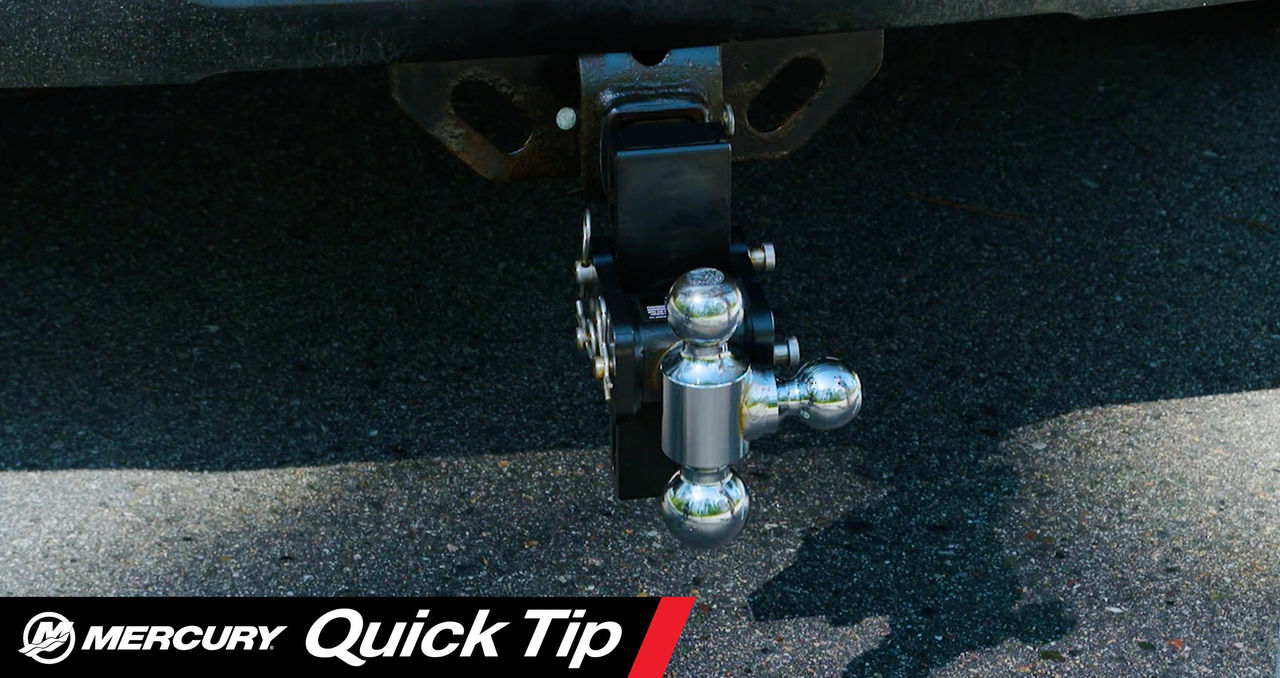Ask a boater to list everything they periodically service and chances are their trailer hitch would come last. Or else it wouldn’t even make the list.
The fact is that your trailer hitch doesn’t need much attention, but it does need a little. Why? Well, if you boat in saltwater, or you live in a Northern clime where your hitch is getting mercilessly sprayed with road salts, you’re going to have to deal with corrosion eventually. While it’s rather unlikely your hitch will actually fail, a rusty hitch is very hard to remove and reinstall – and it certainly looks terrible. So do your tow vehicle a favor and give the hitch some TLC once or twice a year.
In this Mercury Quick Tip Video, the folks at Wired2Fish show you how to give your hitch the attention it deserves. To get started, all you need is a can of penetrating oil, a few rags or a roll of shop towels, and a stiff nylon scrub brush. Then just follow the steps demonstrated in the video:
- First, remove the hitch from the receiver by pulling out the spring clip and pin. If the clip, pin or hitch itself are stuck, as may happen if they haven’t been removed in a while, a few taps with a mallet or block of wood will usually free them up. If your hitch has multiple pin positions, note which one you’ve been using so you can put it back the same way.
- Take your dry brush and give the hitch shank (the part that inserts into the receiver) and the hitch pin a good scrubbing to remove all loose dirt and rust. Do the same with the face and lip of the receiver. If the scrub brush doesn’t do the job, a wire brush may be needed.
- Give the shank, receiver and pin a liberal coating of penetrating oil. Don’t forget to spray the outer surfaces of the receiver as well. You don’t have to soak them to the point the oil is running off, but don’t leave anything uncoated.
- Wipe off the excess oil and rust with a shop towel.
- Reinstall the hitch in the receiver and replace the pin and clip. Even if you intend to remove and store the hitch after cleaning, NEVER put a hitch in the receiver without properly securing it with the pin and clip. It’s just too easy to forget and drive away with it unpinned, which will result in a lost hitch and a significant road hazard for others.
- Scrub the rest of the hitch with the nylon brush. If your hitch height can be adjusted by pulling a couple of pins, as shown in the video, remove the pins and take the hitch apart so you can easily get to the hidden surfaces and all recessed areas. Don’t forget to brush off these pins also. Spray the entire assembly with penetrating oil and exercise the mechanism (move it several times throughout its full range of motion) before replacing the pins and clips in their original locations.
- The above procedure is the same for the more common non-adjustable hitch, but of course there will be no need for disassembly. Be sure to clean the shank of the tow ball – the threaded, bolt-like part – to keep the threads from getting corroded.
- Wipe off all excess oil from the parts of the hitch you just cleaned and lubricated.
This is also a perfect time to do a quick inspection:
- Any clips that are bent or weak should be replaced immediately.
- Work the hitch up and down, back and forth. The hitch itself will move a bit in the receiver, but the receiver itself should remain rock solid. If it doesn’t, get it checked for loose or broken bolts as soon as possible, and absolutely before using the hitch again.
- If your hitch has a conventional tow ball that’s held on with a large nut and lock washer, use a large, suitable tool like a box-end wrench, adjustable wrench or pipe wrench to make sure the nut is good and tight. If the ball spins when you try to tighten it, you’ll need a second wrench on top, and perhaps a helper, to get it properly torqued. Do this with the hitch secured in the receiver so the weight of your vehicle can help you keep the hitch immobile.
- If in doubt about the roadworthiness of any part of your hitch or trailer, or if you need help tightening the tow ball or checking the stability of your receiver, consult your local Mercury Authorized Dealer.
That’s it. Your hitch is now ready for another season of reliable, unsung service getting your boat to and from the water.




